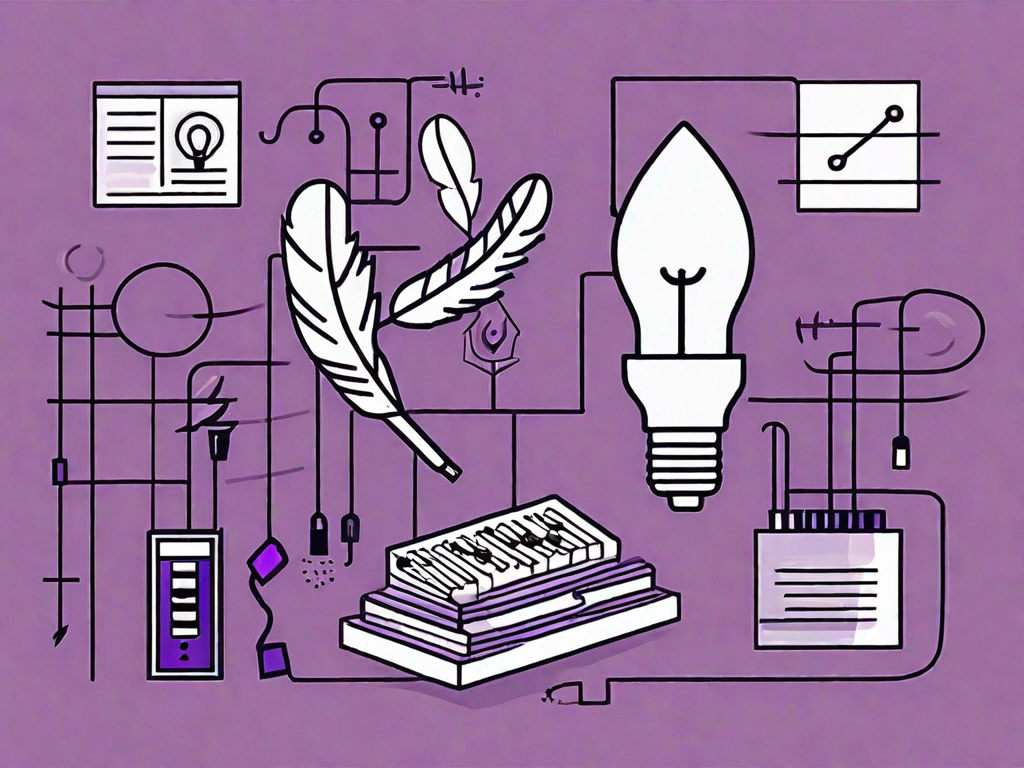Imagine a world where you can transmit notes, messages, and all sorts of other stuff through a mystical web of relays. Sounds like something from a sci-fi movie, right? Well, hold on to your hats because relay transmission is no longer a thing of the future—it’s a reality! In this article, we’ll dive into the fascinating world of relay transmission and explore how it has revolutionized communication as we know it.
Understanding the Basics of Relay Transmission
Before we venture into the magical realm of relay transmission, let’s take a moment to grasp the concept behind it. So, what exactly is relay transmission? In simple terms, it’s a method of sending information from one point to another through a series of relays. These relays act as intermediaries, passing on the information until it reaches its intended destination.
Relay transmission, also known as relay messaging, involves the use of relays to transmit data between users. It harnesses the power of these relays to create a robust network that enables seamless communication.
Now, you might be wondering, why do we need relay transmission anyway? Well, the beauty of relay transmission lies in its ability to ensure privacy and security. By bouncing the data through relays, it becomes incredibly difficult for prying eyes to intercept and access the information being transmitted. It’s like a game of hide and seek, where the data is the sneaky player and the relays are its ever-loyal protectors!
How Does Relay Transmission Work?
Now that we understand the basics of relay transmission, let’s dive a little deeper into how it actually works. Imagine you want to send a message to your friend who is located in a different city. Instead of sending the message directly, you decide to use relay transmission.
First, your message is encrypted to ensure its confidentiality. Then, the encrypted message is sent to the first relay in the network. This relay receives the message and decrypts it using a unique key. Once decrypted, the relay reads the destination address and forwards the message to the next relay in the chain.
This process continues until the message reaches the final relay, which is located near your friend. The final relay then encrypts the message again before sending it to your friend’s device. This multi-hop process ensures that the message remains secure and anonymous throughout its journey.
The Benefits of Relay Transmission
Relay transmission offers several benefits that make it an attractive option for secure communication. Firstly, it provides anonymity by hiding the original source of the message. This makes it difficult for anyone to trace the message back to its sender.
Secondly, relay transmission enhances privacy by encrypting the message at each relay point. This means that even if a relay is compromised, the encrypted message remains unreadable without the proper decryption key.
Lastly, relay transmission improves network resilience. Since the message is passed through multiple relays, even if one relay fails or is compromised, the message can still reach its destination through alternative routes. This redundancy ensures that communication remains uninterrupted.
In conclusion, relay transmission is a fascinating method of sending information securely and anonymously. By leveraging a network of relays, it provides privacy, security, and resilience to communication. So, the next time you send a message, remember the hidden world of relays working behind the scenes to protect your data!
The Mechanics of Transmitting Notes Through Relays
Welcome to the fascinating world of transmitting notes through relays! In this discussion, we will delve into the nitty-gritty details of this process and explore the various factors that can affect note transmission. So, let’s get started!
The Process of Note Transmission
When it comes to transmitting notes through relays, the process is not as complicated as it may seem. Your client software plays a crucial role in this endeavor. It takes the note you want to transmit, encrypts it using advanced security algorithms, and then sends it on its way.
Imagine the note hopping from relay to relay, like a virtual game of hopscotch, until it finally reaches the recipient’s client. Each relay acts as a stepping stone, forwarding the note along the relay network until it reaches its destination.
Upon arrival at the recipient’s client, the note goes through a decryption process, revealing its hidden message. It’s like unwrapping a secret gift, but in the digital realm. Voila! Your note has successfully made its way across the relay network, ensuring the privacy and security of your communication.
Factors Affecting Note Transmission
While transmitting notes through relays may seem like a walk in the park, there are several factors that can impact the transmission process. Let’s take a closer look at some of these factors:
1. Network Congestion: Just like rush hour traffic on a busy highway, network congestion can slow down the transmission of notes. When the relay network experiences a high volume of traffic, it may take longer for your note to reach its destination. However, the relay network is designed to dynamically adapt to changing traffic conditions, ensuring efficient delivery even during peak usage periods.
2. Relay Availability: The availability of relays plays a crucial role in the transmission process. If a relay is temporarily offline or experiencing technical difficulties, it may cause delays or even interruptions in note transmission. However, the relay network is designed with redundancy and backup mechanisms to minimize the impact of relay unavailability.
3. Solar Flares: Yes, you read that right! Even cosmic events like solar flares can affect note transmission. Solar flares are powerful eruptions on the sun’s surface that release massive amounts of energy and charged particles. These particles can interfere with communication systems, including the relay network. However, the relay network is designed to mitigate the impact of such cosmic disturbances, ensuring reliable transmission even in the face of solar flares.
Despite these potential challenges, the relay network is built to be resilient and adaptive. It employs advanced technologies and protocols to ensure that your notes find their way to their intended recipients, regardless of the obstacles they may encounter along the way.
So, the next time you transmit a note through relays, take a moment to appreciate the intricate mechanics and the robust infrastructure that make it all possible. Happy note transmitting!
Transmitting Other Stuff: Beyond Notes
While notes are undoubtedly fascinating, relay transmission isn’t limited to them. Oh no, it goes way beyond! In fact, the relay network can handle a wide array of data types, each with its unique set of challenges.
Imagine a world where you can effortlessly share files and images with just a few clicks. Thanks to the relay network, this dream has become a reality. Whether you’re sending a hilarious cat meme to brighten someone’s day or sharing important documents for work, the relay network has got your back. It’s like having a virtual courier service at your fingertips, ready to deliver your data to its destination.
But transmitting different data types through relays is not without its challenges. As with any technological marvel, there are hurdles to overcome. For instance, large files may take longer to transmit due to their size. Imagine waiting anxiously as your progress bar inches forward, eagerly anticipating the completion of the transfer. Patience is indeed a virtue in these situations.
Then there are videos, those captivating visual stories that we love to share. However, the relay network may require these videos to be compressed to fit within its digital corridors. It’s like trying to squeeze a watermelon through a narrow tube. But fear not, for the relay network has clever algorithms in place to ensure that the essence of your video is preserved, even in its compressed form.
And let’s not forget about voice recordings, those snippets of audio that capture our emotions and thoughts. Occasionally, these recordings may experience a case of the hiccups during transmission. It’s like a tiny glitch in the matrix, causing a momentary disruption in the smooth flow of sound. But rest assured, the relay network is constantly improving its mechanisms to minimize these hiccups and deliver your voice recordings with crystal clarity.
So, whether you’re transmitting files, images, videos, or voice recordings, the relay network is up to the challenge. It’s a technological marvel that continues to evolve, adapting to the ever-changing landscape of data transmission. With each passing day, it becomes more efficient, more reliable, and more capable of handling the diverse range of data types that we entrust to its digital embrace.
Enhancing Relay Transmission Efficiency
Now that you’re well-versed in the world of relay transmission, how about we dive into some tips and tricks to enhance its efficiency?
When it comes to relay transmission, there are several techniques you can employ to optimize its efficiency. One such technique is the utilization of compression algorithms. These nifty little algorithms work their magic by reducing the size of data packets, allowing them to travel faster through the relay network. Imagine a relay race where the baton is lighter and sleeker, enabling the runners to sprint with lightning speed.
Another effective technique to enhance relay transmission efficiency is through the prioritization of certain types of data. By giving them the VIP treatment, these data packets are ensured to arrive promptly at their destination. It’s like skipping the queue at a fancy restaurant—you get to enjoy your data dish with lightning-fast speed! Whether it’s critical information that requires immediate attention or high-priority data that demands swift delivery, prioritization ensures that important messages are not left waiting in line.
Future Trends in Relay Transmission Technology
As technology continues to march forward, so does relay transmission. The future holds exciting possibilities, with advancements such as artificial intelligence (AI) being integrated into relay networks to further enhance their efficiency and security. AI can analyze network patterns, predict potential bottlenecks, and dynamically adjust the relay transmission process to optimize performance. This intelligent adaptation ensures that data flows smoothly through the network, minimizing delays and maximizing efficiency.
Furthermore, the integration of AI into relay transmission systems also enhances security. AI algorithms can detect and mitigate potential threats, such as malicious attacks or unauthorized access attempts. By constantly monitoring the network and analyzing data patterns, AI-powered relay systems can identify anomalies and take proactive measures to safeguard the integrity and confidentiality of transmitted data.
Looking even further into the future, researchers are exploring the possibility of using quantum relay transmission. Quantum relays leverage the principles of quantum mechanics to transmit information securely over long distances. This cutting-edge technology holds the promise of ultra-secure communication, where data is protected by the laws of physics themselves. While still in the experimental stages, quantum relay transmission represents a fascinating frontier in the field of secure communication.
So, there you have it—the marvelous world of transmitting notes and other stuff through relays. From the basics of relay transmission to the mechanics of note transmission, we’ve covered it all. Remember, relay transmission is more than just a means of communication—it’s a gateway to a world where privacy and security reign supreme. So, go forth, transmit your notes, and let the relays be your trusty companions on your digital adventures!

